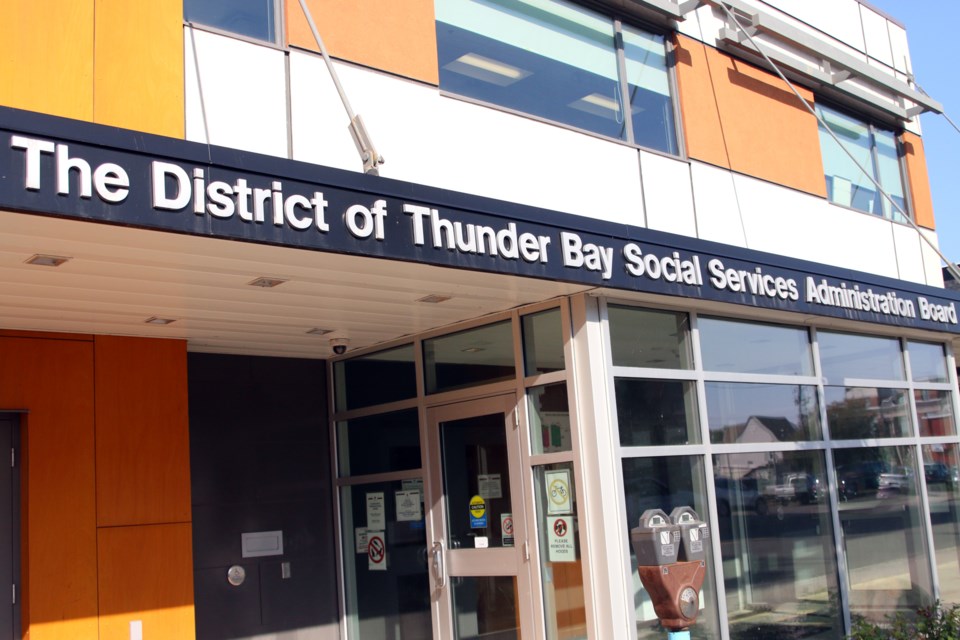THUNDER BAY — The District of Thunder Bay Social Services Administration Board’s 2023 budget includes significant new investments in staffing for the agency’s social housing, as well as millions in new federal childcare funding.
The operating budget will rise by 12.5 per cent to nearly $111.5 million, while the DSSAB’s levy on district municipalities and unorganized areas will rise by 5.5 per cent.
That budget is spent in three broad categories, with around 44 per cent going toward community housing and homelessness, 31 per cent to social assistance programs like Ontario Works, and 25 per cent to child care and early years programs.
The agency serves the District of Thunder Bay, including outlying communities like Marathon and Greenstone.
A significant amount of this year’s increase is related to the Canada-Wide Early Learning and Child Care program, intended to eventually deliver the Liberal promise of a comprehensive $10-a-day child care system.
The funding has helped reduce child care fees for local parents by a staggering 56 per cent from 2021, on average, the DSSAB says. It received $9.4 million through the program for 2023, the first full year of implementation.
Bradica said access to limited child care spaces remains a problem, however.
“Until there’s more people working in that system, we’re not going to see necessarily a big increase in the number of new spaces – we’re thinking maybe 30 to 50 in 2023, and then building on that in future years. What most of this money is really going to do is reduce the fees for parents who already have children in the system.”
Staffing expansions in the budget include a security and risk officer, four new custodians, and a tenant support worker.
Bradica said that responds in part to serious security concerns that have been raised by residents in social housing.
“We’ve invested significant amounts in camera and door monitoring systems over the years, but from the security audit, it was clear that… we need to have a position to really coordinate the use of those, and be the focal point for contact with security firms and police,” he said.
The new custodians, meanwhile, will address declining tenant satisfaction with cleanliness, and help with minor maintenance.
The DSSAB also faces rapidly rising costs in its social housing operations, with increases to property taxes, utilities, snow removal, and insurance adding close to $1.5 million to its budget.
On homelessness, the DSSAB is anticipating “status quo” spending after receiving a boost in provincial funding last year. The province hasn’t yet confirmed its 2023 allocation, but Bradica is not expecting another large bump.
The DSSAB spends a total of $5.8 million on homelessness, with $1.1 million for emergency shelters, $2.6M million for outreach, and $1.5 million for housing assistance programs.
That should allow the DSSAB to continue funding initiatives like the care bus and warming centres, as well as outreach work in local homelessness encampments.
Bradica expects some of the transitional housing units for which funding was announced last year could come on line late this year or early in 2024. That includes 21 units built by the Matawa tribal council, and 10 built by Dilico Anishnabek Family Care.
Bradica hopes to use some DSSAB homelessness dollars to provide housing allowances for those facilities.
He said there’s little room in the budget to support any new transitional or supportive housing builds, something local service agencies have identified as a pressing need.
“In terms of any new capital [investment in transitional housing], I’m not sure that’s going to be possible with the status quo amount, so we’ll be looking for any additional funds that might be made available by the province or possibly the federal government,” he said.
The DSSAB said only six per cent of its budget goes toward administration and overhead, with the rest made up of funding provided to community partners to deliver programs (34 per cent), direct transfers to individuals and families (31 per cent), operation of DSSAB housing (16 per cent), and DSSAB program delivery (13 per cent).
